1969 Dodge Travco Before
What’s it like to restore a 50-year-old motorhome?
To close out the year I thought I’d post some images from all the work that I’ve done on the bus over the last 12 (really 18, but who’s counting) months. It’s not finished yet, so the 1969 Dodge Travco After post will have to wait another month. It’s been over two years and I’ve never written the after post. I did, however, write a little thing about what it’s like for a family of five to live in a 1969 Dodge Travco Motorhome, which you might enjoy.
Here’s some pictures of how she looked when we got her, along with some of the damage I uncovered and repaired.
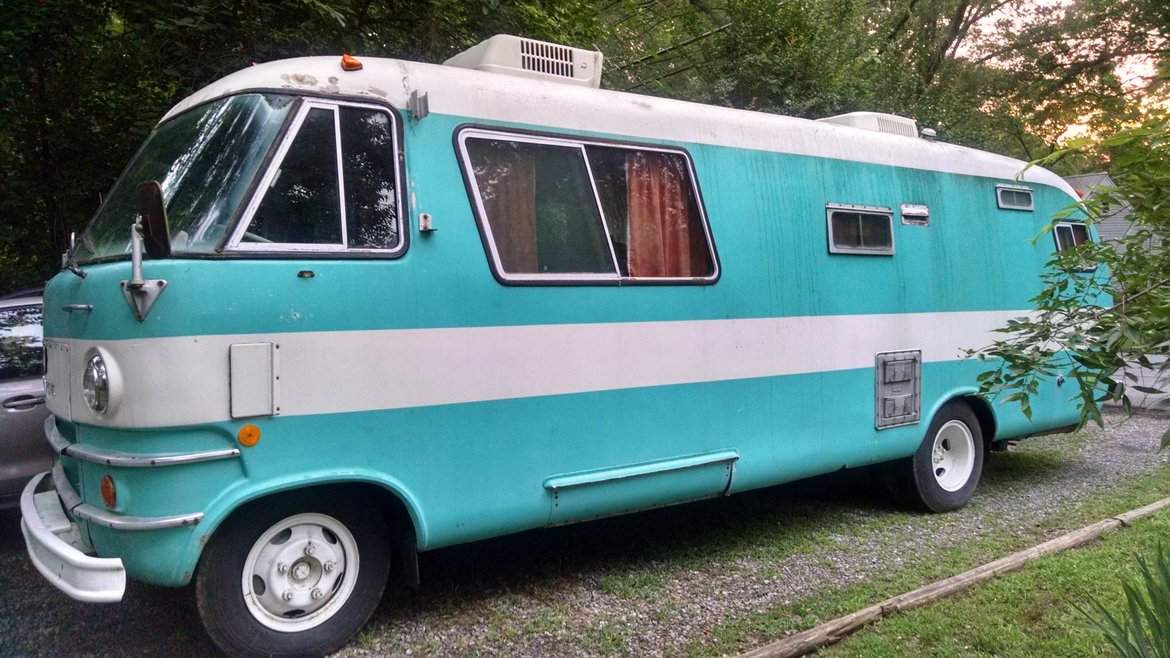
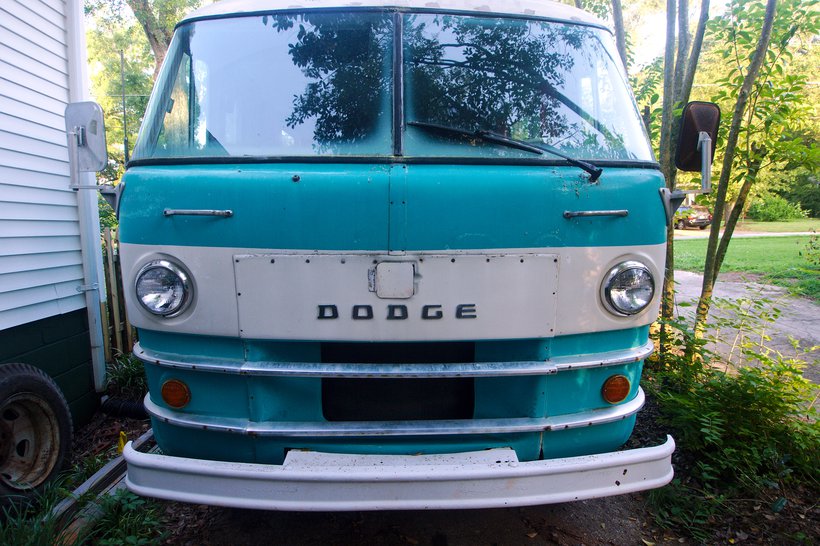
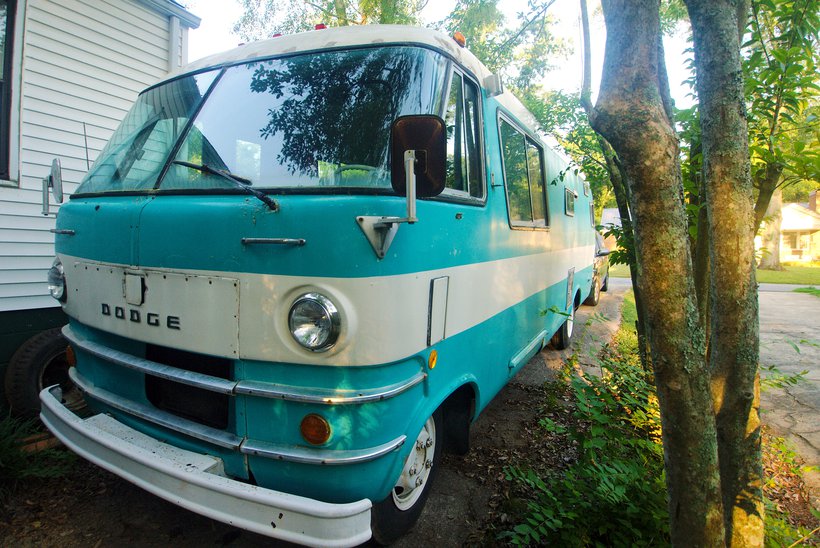
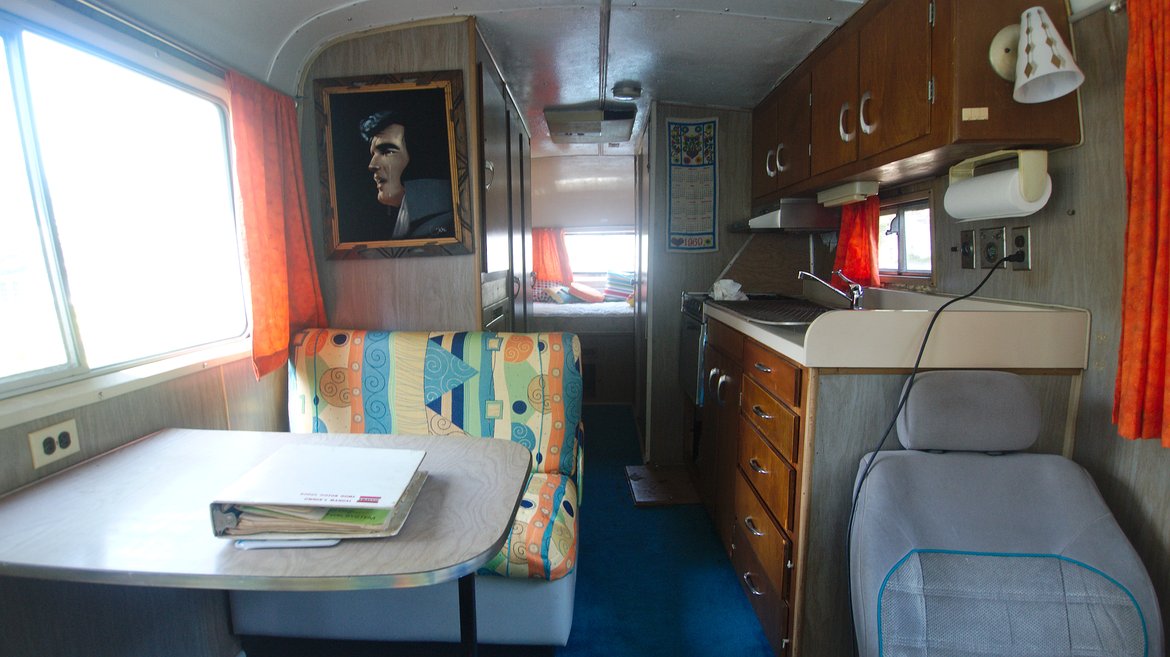
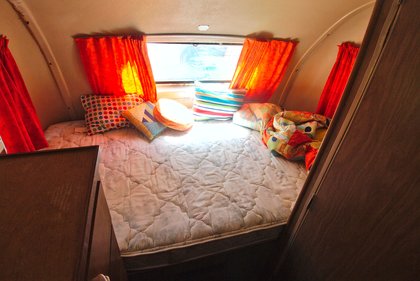
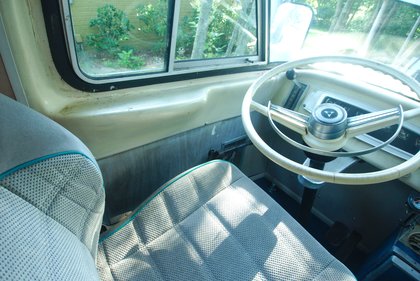
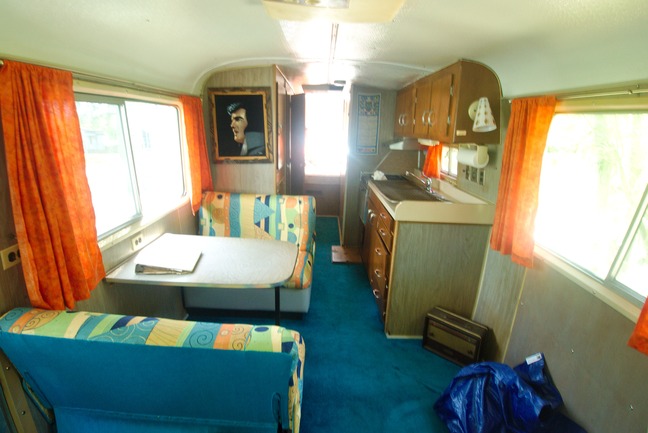
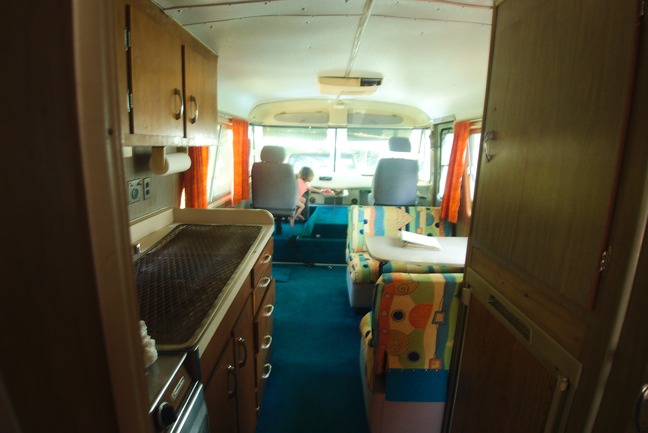
I know what you’re thinking, “hey, that looks pretty good, what is there to restore? Shouldn’t take long right?” Selective photography is why it looks good.
I started in the cockpit area because it was easiest thing to get at. The damage was pretty minimal too, just rip out the wood, throw away the fiberglass insulation and you’re ready to rebuild.
In fact tearing out the old wood and fiberglass was so easy I went ahead and did the rest. Long sleeves and a mask recommended.
Once that was done I dug into the actual structural damage. Fortunately there wasn’t that much. It was all water damage, most of which I knew about going in (except for under the water tank beneath the back bed, which was a surprise).
The window in the kitchen leaked badly and was the source of most water damage in the bus.
In the back something around the water tank leaked.
It took quite a while to figure out what was leaking in the back and where. In the end several things could have been the culprit, my guess is it was a combination of all of them — the back window seal, the running light anchor screws, and a ding in fiberglass near the taillight. Once I had the kitchen window resealed and all the leaks in the back fixed I patched the floor in both spots with 5/8in marine grade plywood.
Plywood digression: quite a few people restoring RVs and trailers seem confused about marine grade plywood. It’s not that special, just expensive. Marine grade doesn’t mean it’s sealed or somehow better wood. Marine grade is a technical term for “not quite as shitty as Home Depot plywood”. All it means is that there’s no gaps in among the layers of ply. You still need to seal it. I used some industrial strength deck sealant on the bottom and several layers of paint on the topside.
Here’s the basic floor repair process:



Rinse and repeat until you’re structurally sound again. Just make sure you’ve stopped all the leaks first.
Once the leaks had been stopped and the floor was repaired I got to start on the actual fun stuff (to me anyway) — rebuilding the walls and cabinetry. I didn’t take nearly as many photo as I wish I had during the process of rebuilding, but here’s a few random shots of various things.

For the most part I tried to keep everything the way it was. I did add a few things here and there though, most noticeably the cabinets above the windows, which I built in part for the storage and in part to make it easier to do the ceiling/wall junction by, well, covering it up.
And finally, here’s a few more up-to-date images from about a month ago.
There’s still a few things to do, like reupholster the seats, install the floor, and install a water tank, but she’s very close. Close enough that I’d hit the road as soon as the floor goes in (next week if I have the time) were it not for the whole need-to-sell-our-house thing. Next year.
-
That’s RV restoration time. To calculate that value in the actual time that most of you live in, just multiply by 2. Or 3. ↩

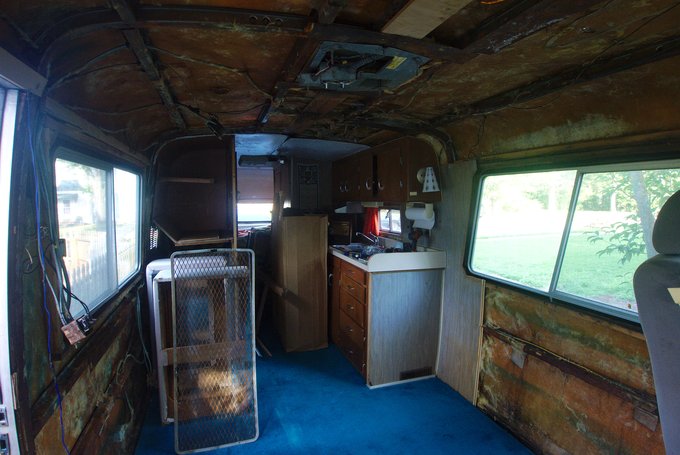






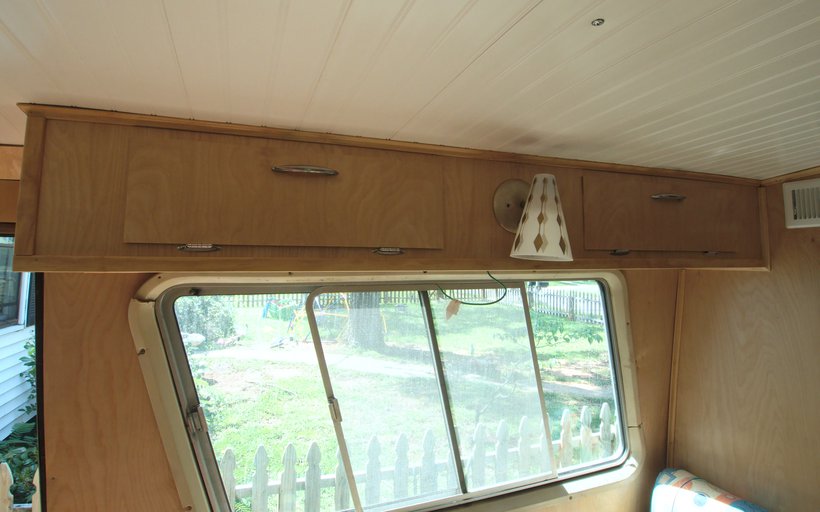
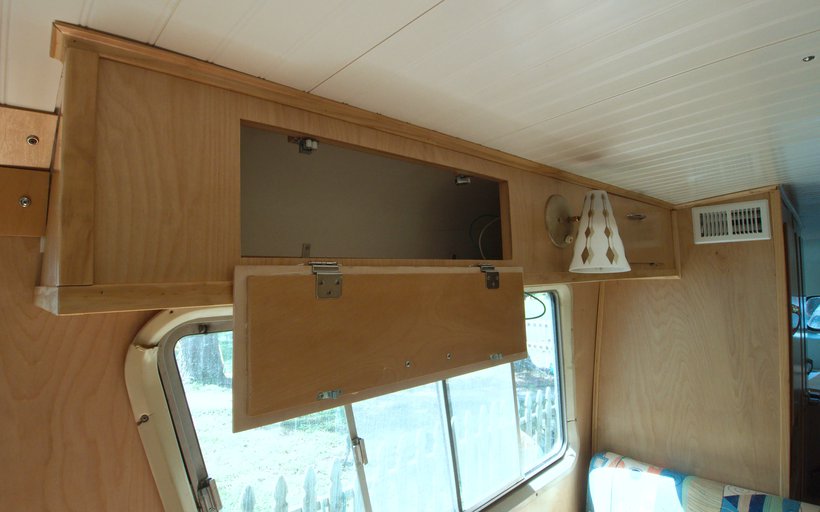
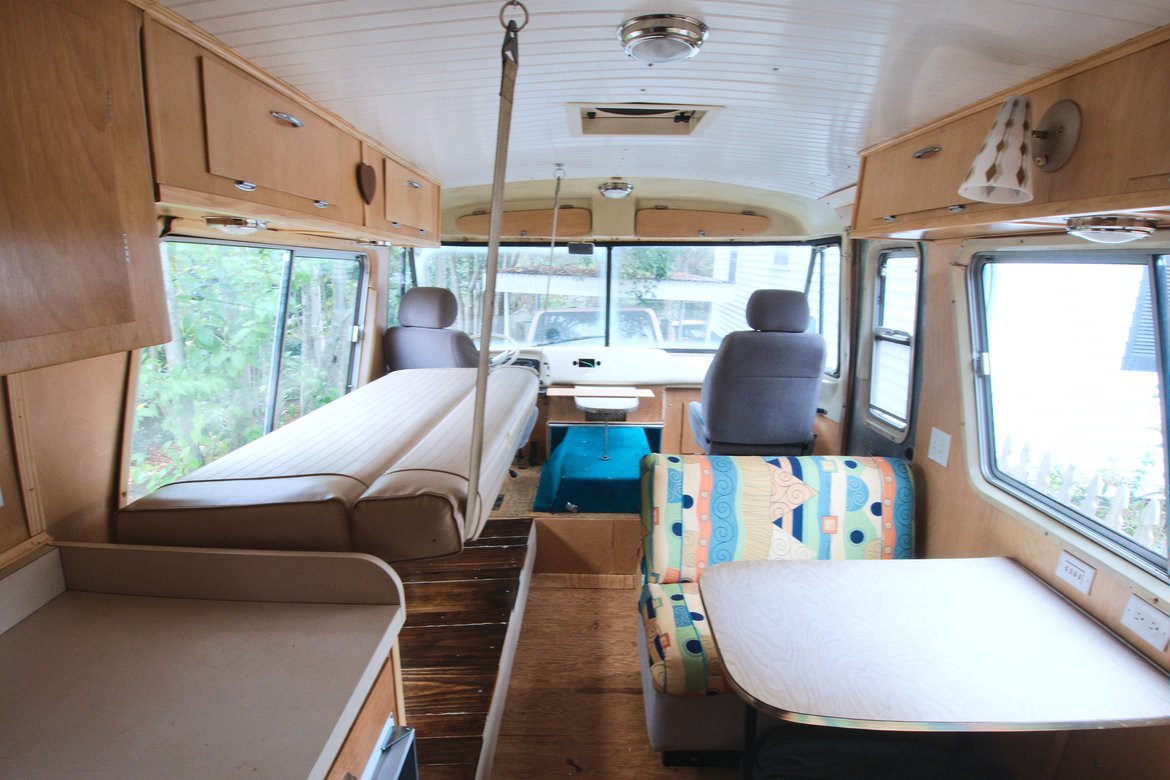
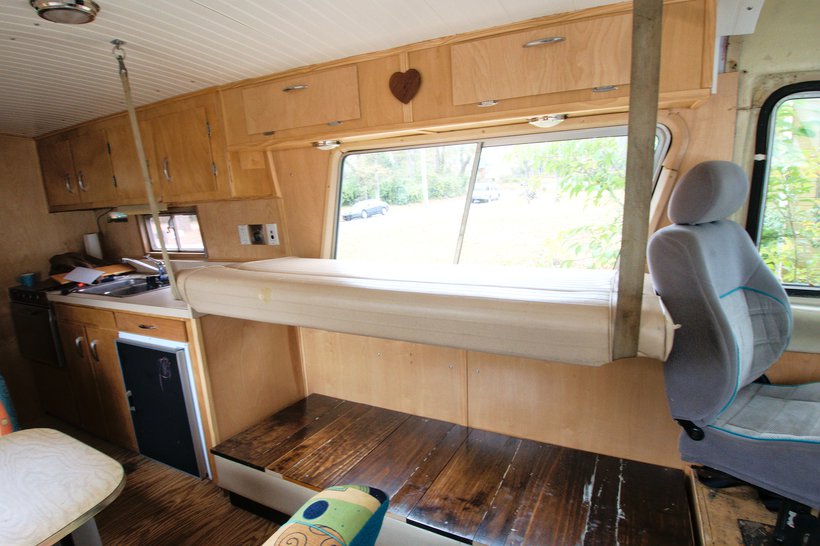
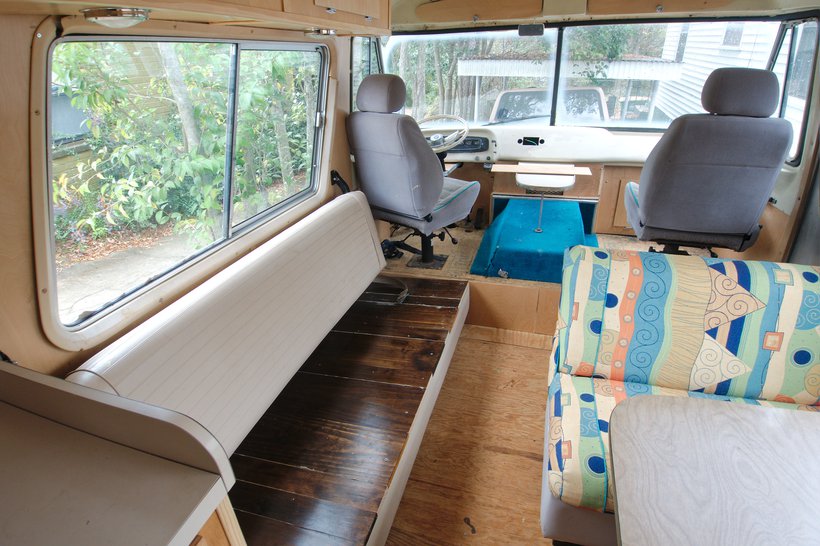
Please tell me you kept the Elvis picture and tell him goodnight every night you fall asleep! I cant wait to read more.
@drew-
Thought about putting him in the bathroom. I think Elvis paintings should always be over the toilet. Respect.
But Elvis fell victim to one our ‘put everything on eBay’ purges.
Took me a coon age to find u guys Nice job !!! When do you plan to hit the road? I always wanted to convert a old time milk truck. Have fun, I will try to pay attention to where your at.
I HAVE 1969 1 OWNER 33,000 MI MDL 270 IT WAS PURCHASED IN INGLEWOOD CA.1969,DROVE 4 5 VACATION’S & PARKED IN A BARN, NO REALLY.THE MAN & WOMAN WERE IN THEIR 90s WHEN I BOUGHT IT.THEY NEVER DROVE IT AGAIN AFTER 1980.318cu.(REBUILT 727 OVERDRIVE,NOT INSTALLED)WHEN I INSTALL IT & CLEAN IT UP (THE STOVE HAS NEVER BEEN USED)THE BATHROOM WITH SHOWER LOOK’S NEW.EVERTHING WORK’S WHEN I FINISH $12,000